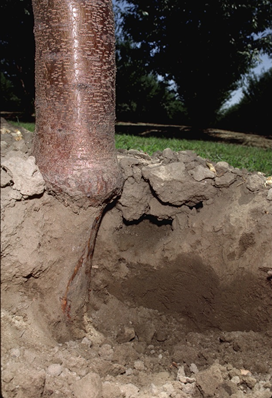Preserve Your Environment-friendly Area: Tackle Gopher Yard Damage Head-On
Preserve Your Environment-friendly Area: Tackle Gopher Yard Damage Head-On
Blog Article
Ultimate Insect Control Solutions for Tackling Persistent Gopher Invasion Issues
In the world of pest control, gophers provide a distinct challenge because of their persistent nature and destructive habits. Gardeners and homeowners commonly locate themselves secured a battle of wits with these below ground insects, seeking effective services to redeem their outdoor rooms. While the quest for gopher control may appear daunting, there exist targeted techniques and devices that can turn the trend in support of those looking for break from these delving problems. By discovering a thorough strategy that incorporates understanding gopher behavior, using specialized capturing techniques, using repellents, and embracing long-term prevention strategies, a course in the direction of efficient gopher administration emerges. The trip in the direction of attaining comfort in the face of gopher problems starts with a purposeful and educated technique.
Recognizing Gopher Habits Patterns
Examining gopher actions patterns offers valuable understandings into their routines and choices, aiding in the development of effective parasite control strategies. Comprehending exactly how gophers behave is important in designing effective pest management strategies.
Gophers are burrowing rats recognized for their considerable tunneling activities. gopher lawn damage. By observing their habits, scientists have actually found that gophers are territorial animals, with each gopher normally populating its own tunnel system. These tunnel systems offer numerous purposes, including nesting, food storage, and security from predators
Furthermore, gophers display specific feeding patterns, choosing origins, bulbs, and various other below ground plant components. By comprehending their nutritional choices, pest control specialists can tactically lure catches or execute repellents that target these food sources, properly decreasing gopher populations.
Moreover, gophers are most energetic throughout certain times of the day, commonly morning and late mid-day. This understanding can assist in organizing insect control tasks for optimum performance. Overall, a thorough understanding of gopher actions patterns is important for executing targeted and efficient pest control measures.
Effective Entraping Techniques
When dealing with gophers, traps are a humane and efficient method for control. One of the most generally utilized catches is the box trap, which records gophers active so they can be released elsewhere. It's essential to examine catches regularly to make certain trapped gophers do not suffer and to eliminate captured gophers without delay.
Utilizing Repellents and Deterrents
To match the effectiveness of capturing techniques in taking care of gopher problems, property owners can explore the use of repellents and deterrents as additional tools in their parasite control arsenal. Deterrents, on the other hand, aim to make the atmosphere much less eye-catching to gophers by using resonances or appear to imitate predators or create disturbances that make the area inhospitable for gophers. When incorporating repellents and deterrents into an insect control strategy, it is vital to adhere to application guidelines meticulously and routinely reapply the products to maintain their effectiveness in preventing gophers from triggering damages to residential or commercial properties.
Implementing Natural Control Techniques

Gopher catches can be positioned strategically in energetic passages to capture and get rid of the parasites. These traps are a gentle way to regulate gopher populations without resorting to poisonous gopher pest control substance or harmful chemicals. By integrating these all-natural control approaches, it is feasible to properly handle persistent gopher infestations in a green fashion.
Incorporating Long-Term Avoidance Methods
To develop enduring control over gopher invasions, it is necessary to include aggressive actions that concentrate on protecting against future incidents. Applying long-lasting prevention strategies can substantially reduce the likelihood of gopher re-infestations. One efficient strategy is to mount below ground obstacles made of cord mesh or hardware fabric around vulnerable locations like yards or lawns. These barriers act as a physical deterrent, protecting against gophers from tunneling right into these areas. Additionally, on a regular basis examining and repairing any kind of existing barriers can assist keep their performance with time.
Gophers are drawn in to areas with bountiful food sources like bulbs, plants, and roots. gopher exterminator. By incorporating these proactive actions into your parasite control approach, you can create a hostile environment for gophers, ultimately minimizing the probability of future infestations.

Conclusion
In verdict, resolving gopher problems needs an extensive approach that incorporates trapping strategies, repellents, all-natural control methods, and long-term prevention methods. By understanding gopher habits patterns and using a combination of these remedies, homeowners can successfully manage consistent infestations and stop future events. It is necessary to consistently keep these bug and monitor control actions to guarantee a gopher-free atmosphere.
By exploring a comprehensive approach that incorporates understanding gopher behavior, utilizing specialized trapping techniques, using repellents, and taking on lasting prevention strategies, a path in the direction of effective gopher administration arises. By observing their behavior, researchers have discovered that gophers are territorial animals, with each gopher typically inhabiting its own tunnel system. It's important to examine catches often to ensure trapped gophers do not suffer and to remove caught gophers without delay. Deterrents, on the other hand, aim to make the environment less attractive to gophers by utilizing resonances or appear to mimic predators or create disturbances that make the location inhospitable for gophers. In addition, growing certain vegetation that gophers disapproval, such as castor bean plants or gopher spurge, can act as a deterrent.
Report this page